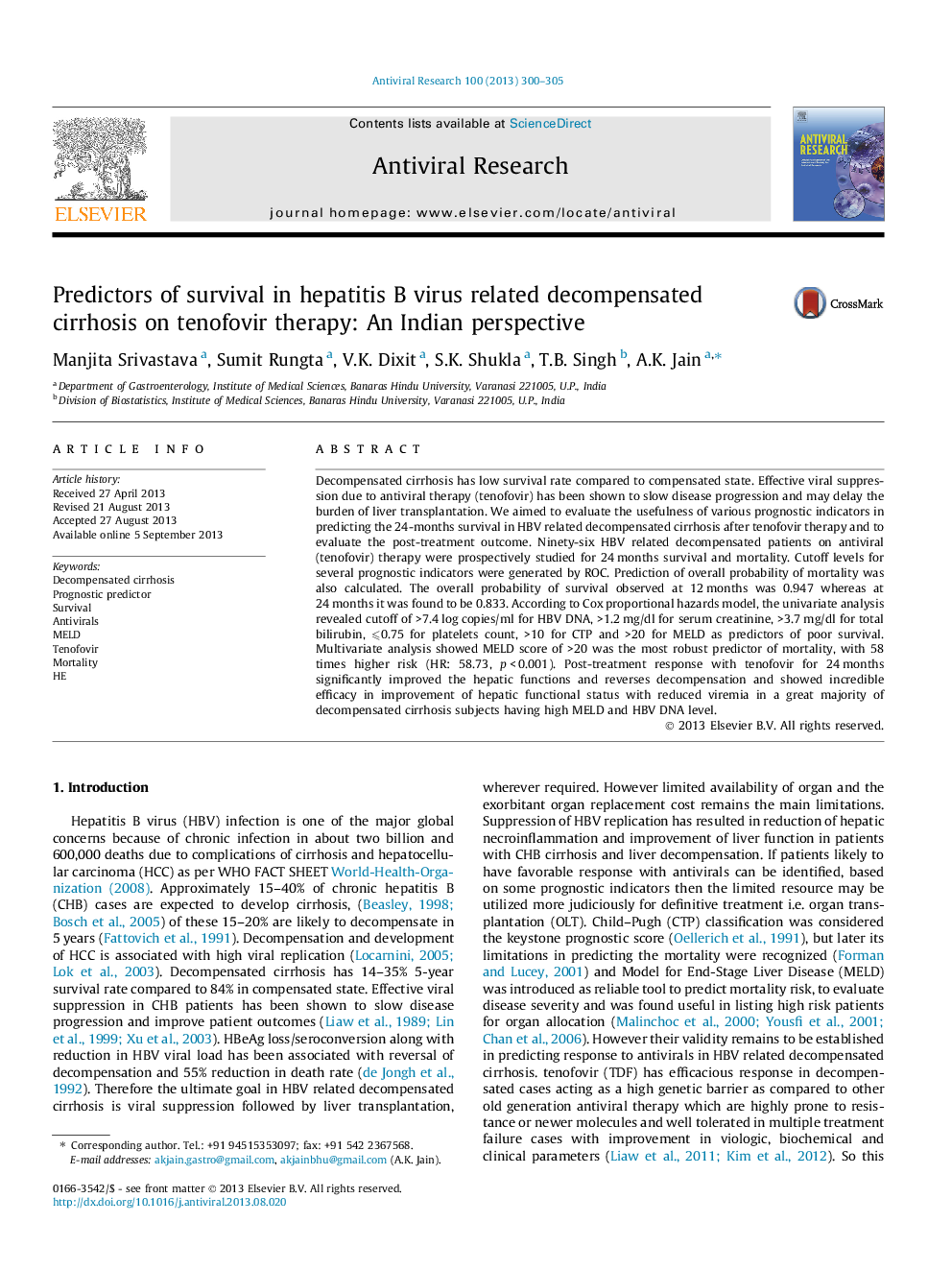| Article ID | Journal | Published Year | Pages | File Type |
|---|---|---|---|---|
| 5822309 | Antiviral Research | 2013 | 6 Pages |
â¢MELD score >20 was the most robust predictor of mortality (58 times higher risk).â¢Probability of survival at 1st year and 2nd year was 0.947 and 0.833 respectively.â¢Tenofovir achieved >80% survival (two year) in HBV related decompensated cirrhosis.â¢CTP>10, MELD>20 and HBV DNA>7.4 log copies/ml revealed poor post-treatment response.â¢Tenofovir was efficacious in paucity of viral breakthrough and clinical improvement.
Decompensated cirrhosis has low survival rate compared to compensated state. Effective viral suppression due to antiviral therapy (tenofovir) has been shown to slow disease progression and may delay the burden of liver transplantation. We aimed to evaluate the usefulness of various prognostic indicators in predicting the 24-months survival in HBV related decompensated cirrhosis after tenofovir therapy and to evaluate the post-treatment outcome. Ninety-six HBV related decompensated patients on antiviral (tenofovir) therapy were prospectively studied for 24 months survival and mortality. Cutoff levels for several prognostic indicators were generated by ROC. Prediction of overall probability of mortality was also calculated. The overall probability of survival observed at 12 months was 0.947 whereas at 24 months it was found to be 0.833. According to Cox proportional hazards model, the univariate analysis revealed cutoff of >7.4 log copies/ml for HBV DNA, >1.2 mg/dl for serum creatinine, >3.7 mg/dl for total bilirubin, ⩽0.75 for platelets count, >10 for CTP and >20 for MELD as predictors of poor survival. Multivariate analysis showed MELD score of >20 was the most robust predictor of mortality, with 58 times higher risk (HR: 58.73, p < 0.001). Post-treatment response with tenofovir for 24 months significantly improved the hepatic functions and reverses decompensation and showed incredible efficacy in improvement of hepatic functional status with reduced viremia in a great majority of decompensated cirrhosis subjects having high MELD and HBV DNA level.
